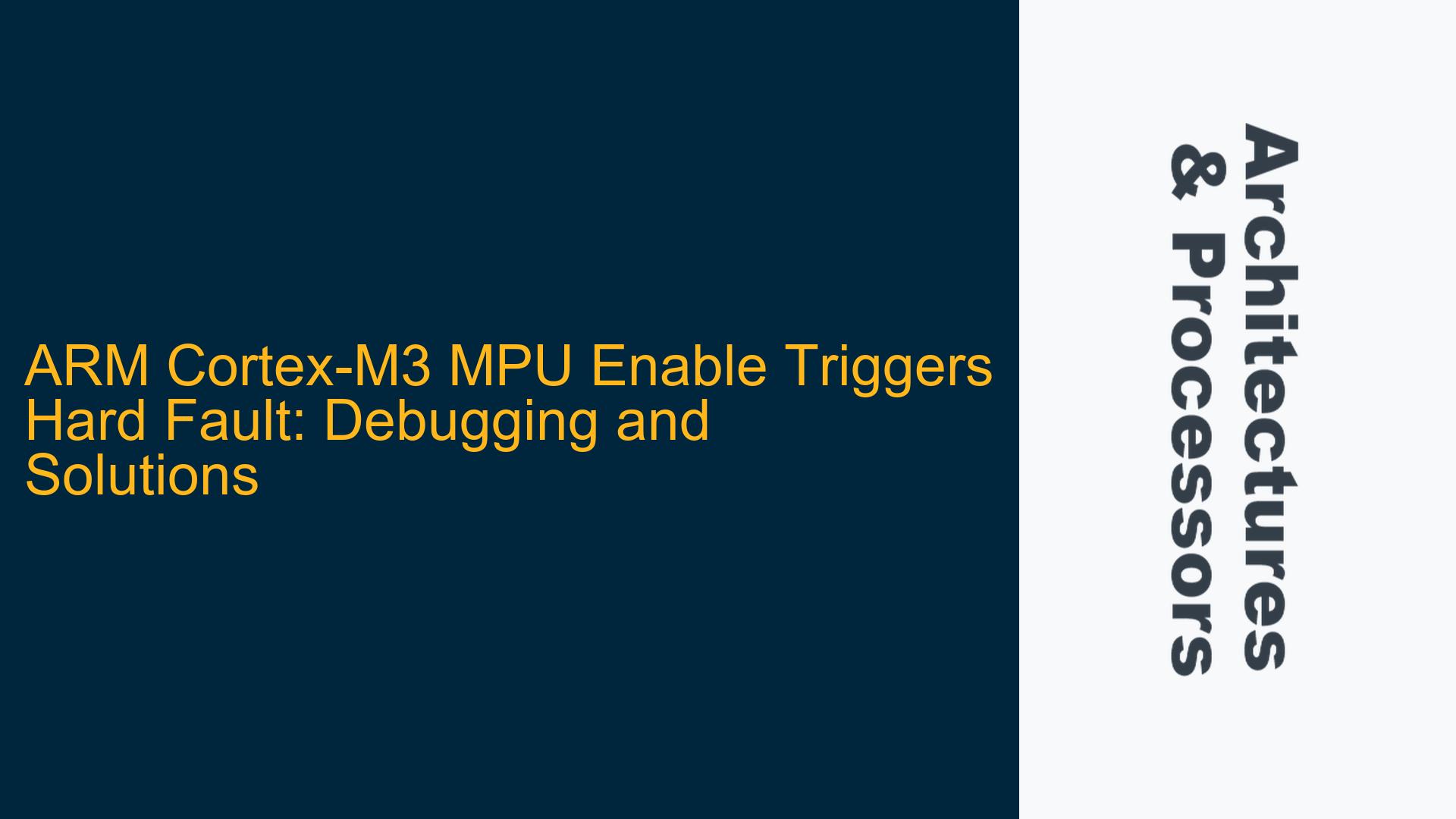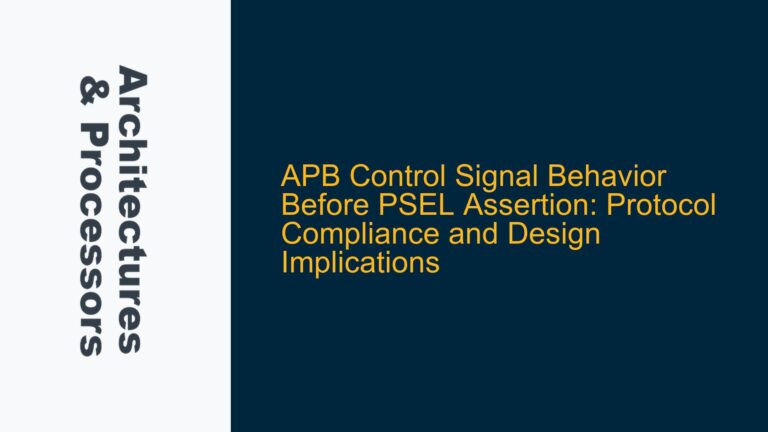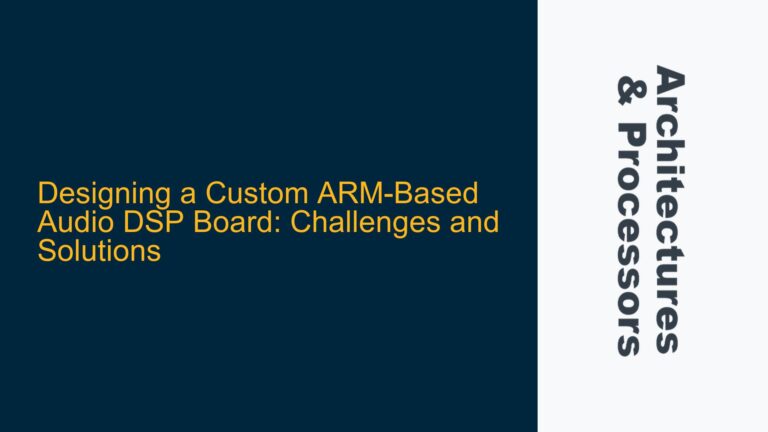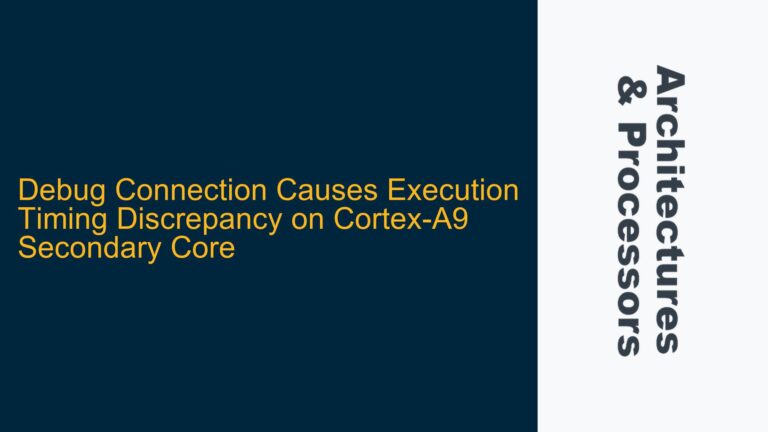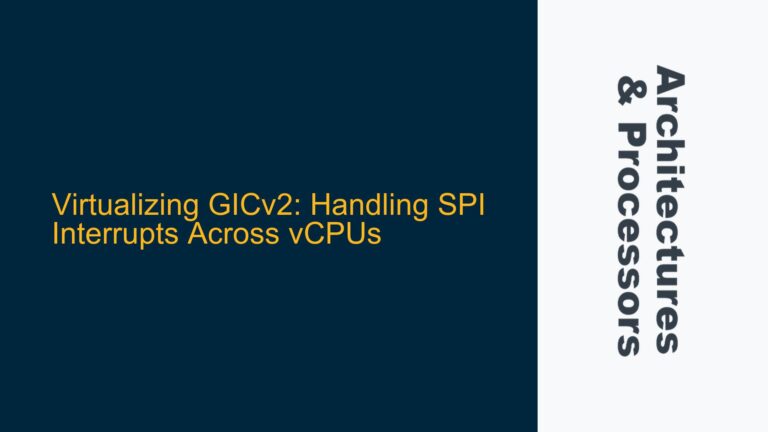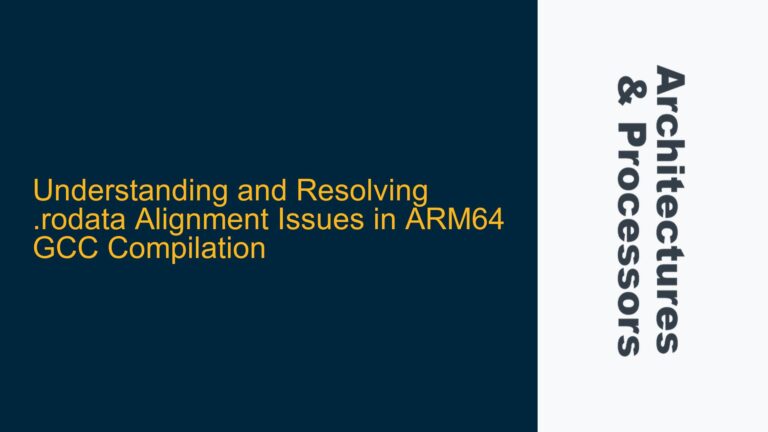MPU Configuration and Hard Fault Trigger During Enable
The ARM Cortex-M3 Memory Protection Unit (MPU) is a critical component for ensuring memory safety and access control in embedded systems. However, enabling the MPU can sometimes lead to unexpected hard faults, especially if the configuration is incorrect or incomplete. In this scenario, the hard fault is triggered immediately after executing the instruction SCB->SHCSR |= SCB_SHCSR_MEMFAULTENA_Msk;, which enables the memory fault handler. This indicates that the system is attempting to handle a memory access violation, but the MPU configuration is either insufficient or misaligned with the system’s memory map.
The MPU works by defining regions of memory with specific access permissions. When the MPU is enabled, any memory access that violates these permissions triggers a memory management fault. If the memory fault handler is not properly configured or if the MPU regions do not cover all necessary memory areas, the system will enter a hard fault state. This is particularly problematic in systems where the MPU is enabled in a privileged mode, as the fault handler itself may require access to memory regions that are not properly configured.
The code provided attempts to configure the MPU within the SVC handler, setting up a single region covering a 1MB RAM section starting at 0x20004000 with full privileges. However, the hard fault suggests that either the region configuration is incomplete or the system is attempting to access memory outside the defined region immediately after enabling the MPU.
PRIVDEFENA Bit Omission and Incomplete MPU Region Coverage
One of the primary causes of this issue is the omission of the PRIVDEFENA (Privileged Default Enable) bit in the MPU control register (MPU->CTRL). The PRIVDEFENA bit allows privileged code to access memory regions that are not explicitly defined by the MPU. When this bit is not set, any memory access outside the explicitly defined MPU regions will trigger a memory management fault, even for privileged code. In the provided code, the ARM_MPU_Enable function sets the MPU enable bit but does not set the PRIVDEFENA bit, leading to a hard fault when the system attempts to access memory outside the defined region.
Another potential cause is incomplete MPU region coverage. The MPU requires that all memory accesses be covered by an enabled region if the PRIVDEFENA bit is not set. In this case, the code defines a single region covering a 1MB RAM section, but it does not account for other memory areas that the system might need to access, such as the stack, peripheral registers, or the vector table. If the system attempts to access any of these areas after enabling the MPU, a memory management fault will occur, leading to a hard fault.
Additionally, the timing of the MPU enable operation relative to other system operations can also contribute to the issue. The MPU is enabled within the SVC handler, which is a privileged context. However, if the system is already accessing memory regions that are not covered by the MPU configuration at the time of enabling, the fault will be triggered immediately. This is particularly relevant in systems with complex initialization sequences or where memory access patterns are not fully understood.
Implementing PRIVDEFENA and Comprehensive MPU Region Configuration
To resolve the hard fault issue, the first step is to set the PRIVDEFENA bit in the MPU control register. This ensures that privileged code can access memory regions that are not explicitly defined by the MPU, preventing immediate memory management faults. The ARM_MPU_Enable function should be modified as follows:
__STATIC_INLINE void ARM_MPU_Enable(uint32_t MPU_Control){
__DSB();
__ISB();
MPU->CTRL = MPU_Control | MPU_CTRL_ENABLE_Msk | MPU_CTRL_PRIVDEFENA_Msk;
#ifdef SCB_SHCSR_MEMFAULTENA_Msk
SCB->SHCSR |= SCB_SHCSR_MEMFAULTENA_Msk; // Enable memory fault handler
#endif
}
By setting the MPU_CTRL_PRIVDEFENA_Msk bit, the system allows privileged code to access undefined memory regions, reducing the likelihood of immediate hard faults.
The second step is to ensure comprehensive MPU region coverage. This involves defining MPU regions for all memory areas that the system needs to access, including the stack, peripheral registers, and the vector table. The following example demonstrates how to configure additional MPU regions:
void SVC_Handler(void){
// Privileged code
ARM_MPU_ClrRegion(1);
// Set first region over a RAM section with full privileges
ARM_MPU_SetRegionEx(1UL, 0x20004000UL, ARM_MPU_RASR(0UL, ARM_MPU_AP_FULL, 0UL, 0UL, 1UL, 1UL, 0x00UL, ARM_MPU_REGION_SIZE_1MB));
// Set second region for the stack
ARM_MPU_SetRegionEx(2UL, 0x20000000UL, ARM_MPU_RASR(0UL, ARM_MPU_AP_FULL, 0UL, 0UL, 1UL, 1UL, 0x00UL, ARM_MPU_REGION_SIZE_64KB));
// Set third region for peripheral registers
ARM_MPU_SetRegionEx(3UL, 0x40000000UL, ARM_MPU_RASR(0UL, ARM_MPU_AP_FULL, 0UL, 0UL, 1UL, 1UL, 0x00UL, ARM_MPU_REGION_SIZE_512MB));
// Set fourth region for the vector table
ARM_MPU_SetRegionEx(4UL, 0x00000000UL, ARM_MPU_RASR(0UL, ARM_MPU_AP_FULL, 0UL, 0UL, 1UL, 1UL, 0x00UL, ARM_MPU_REGION_SIZE_1KB));
ARM_MPU_Enable(0);
}
In this example, additional MPU regions are defined for the stack, peripheral registers, and the vector table. This ensures that all memory accesses are covered by an enabled MPU region, preventing memory management faults.
Finally, it is important to verify the timing of the MPU enable operation. The MPU should be enabled only after all necessary memory regions have been configured and the system is in a stable state. This can be achieved by placing the MPU enable operation at the end of the initialization sequence, ensuring that no memory accesses occur outside the defined regions before the MPU is fully configured.
By implementing these changes, the system should no longer trigger a hard fault when enabling the MPU. The combination of setting the PRIVDEFENA bit, defining comprehensive MPU regions, and ensuring proper timing of the MPU enable operation will result in a stable and reliable system configuration.
